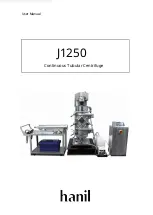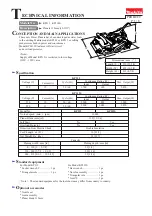
Io
SENSOR
Appendix B Test Overview
SMT-200 Operations and Technical Manual 2.00/R1
95
B.1 Geophone
Basics
In its simplest form a geophone element consists of a coil of wire wound on a former and mounted on
springs. The basic idea is that inertia will, in principle, keep the coil fixed in space while a magnet
firmly attached to the case moves around it (above natural frequency). When a conductor breaks the
magnetic flux lines produced by the magnet a current is generated. A current flowing through any form
of resistance will produce a voltage across the resistance. In our case this voltage is fed to the input
stages of a recording system. The current produced by a single conductor is fairly small so a large
number of turns are used to increase the current produced.
The voltage that the geophone produces is proportional to
the velocity of the ground it is coupled to (above natural
frequency). Just as we need to perform instrument tests on
recording systems we need to perform tests on the
geophones. This ensures the signal that we record on tape
is an accurate representation of the ground response to an
energy release. The SMT-200 tests have been carefully
designed to perform this function.
The fundamental principle the SMT-200 uses for its tests is the idea that conductors breaking
magnetic flux lines producing a current can be applied in reverse. The SMT-200 can apply current to a
phone under test which will physically move the coil. This movement will indirectly produce a voltage
we can measure.
The following is a description of the tests that the SMT-200 can perform and why each is necessary.
B.2 Polarity
Test
It is very important that all strings have the same polarity. That is a similar movement applied to each
detector, at the same time, produces a current in the same direction in each and every detector.
Phone reversal means a typical string will have an element that is canceling out instead of adding to
the signal being fed to the recording system (one reversed element will reduce the string sensitivity by
two elements). The effect is worse when strings are reversed.
This causes more severe problems with
parallel string arrangements and CDP
stacking problems in single string arrays.
Reversed strings cannot be detected by
the recording systems geophone pulse test
so it is important that this test is performed
on all strings.
TEST PRINCIPLE……….
The SMT-200 monitors the output of the
geophone. Once it goes above a
predetermined level for a certain amount of
time the SMT-200 will decide that it is a
“first break” of and external source
(normally a tap) and generate a different
audio signal depending on the polarity.
Geophone Magnet and Coil
Positive
Threshold
Negative
Threshold
Polarity test Thresholds
















































